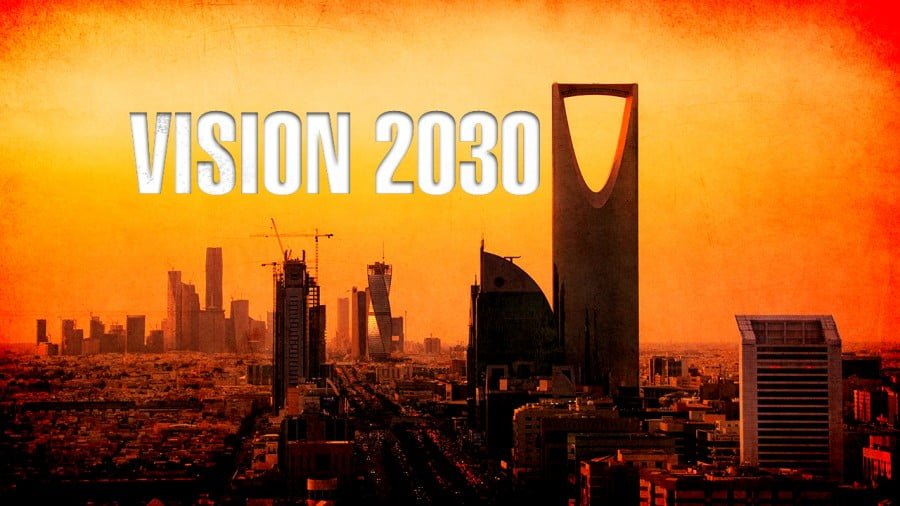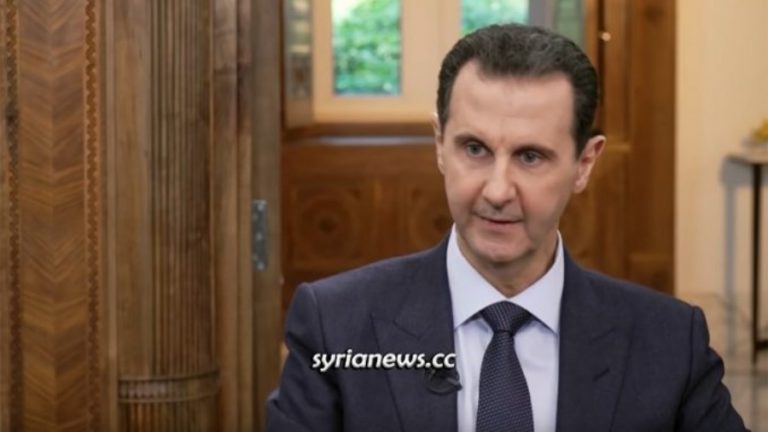In Bed With Saudi Arabia
Modern Saudi Arabia is a recent incarnation, dating to 1932. Six years later Standard Oil discovered oil. Since this time Saudi Arabia’s fortunes have been linked to the price of hydrocarbons, and to the US. Today fossil fuels continue to account for 90% of the nation’s foreign currency earnings. While alternatives to hydrocarbons in the form of shale oil, fracking, tar sands, green energy and electric cars have diminished the importance of oil, polymer plastics guarantee demand for Saudi Arabia’s sole notable export. Most of the remaining 10% in currency earnings is revenue from the 7+ million pilgrims who visit the Islamic holy sites of Mecca and Medina annually.
Saudi governments have preferred to bankroll their operations from oil revenue rather than upsetting their pampered citizens with taxes. With an estimated budgetary break-even point of $65 per barrel, whenever prices fall below this point, they dip into reserves, something Saudi Arabia has done extensively in recent years. Saudi Arabia’s debt rose from $12 billion in 2014 to $85 billion in 2018 while their foreign currency reserves diminished from $797 billion to $514 billion.
The importance of Saudi Arabia to the US is primarily the Petrodollar, a system which obligates the world to buy OPEC oil for dollars, thus perpetuating international demand for the greenback. Furthermore the Saudi Rial is pegged to the US Dollar with Saudi reserves largely parked in US Treasury Bonds. In return the US guarantees to protect Saudi Arabia. It is likely US protection of Saudi Arabia will end, once their economic usefulness expires. That day is coming soon.
IMF predicts bankruptcy by 2020
In 2015 King Salman, son of Saudi Arabia’s founding father, King Abdulaziz Al Saud, became king at the age of 80 and his favourite son Prince Mohammed bin Salman (MBS) was appointed President of the Council of Economic Affairs and Development. Months later the IMF reported Saudi Arabia could be bankrupt within five years. MBS’s response was Vision 2030 – a 15 year ‘reform’ plan to diversify Saudi Arabia from oil and drag the conservative autocracy into the 21st century. Vision 2030 was received with tremendous enthusiasm within the kingdom, but considerable scepticism in the rest of the world. It’s three pillars are:
- cementing Saudi Arabia’s position as the heart of the Islamic world
- investment diversification and
- exploiting Saudi Arabia’s geographic location to become an international trade/transport hub
Islamic Saudi Arabia
Vision 2030 seeks to stamp Saudi Arabia’s domination over the Muslim world and to entertain the 20 million pilgrim tourists they predict in 2020 and 30 million by 2030. Vision 2030 proposes the following:
- constructing the world’s largest Islamic museum.
- constructing other museums.
- developing Islamic libraries and research facilities.
- listing historic Arab and Islamic sites with UNESCO.
- providing incentives to develop the Muslim non-profit sector, and
- encourage individuals to volunteer their time and talents to charitable causes.
Investment powerhouse
Vision 2030 proposed transforming Saudi Arabia’s Public Investment Fund (PIF) into the world’s largest investment vehicle by transferring the state oil giant Aramco (valued by them at USD$2-2.5 trillion) to PIF’s portfolio, together with other non-oil state assets, such as real estate. Vision 2030 makes many exaggerated claims about Aramco’s worth and predictions about future success. The obvious flaw in Aramco’s partial-privatisation plan was the company’s requirement to disclose the true state of their assets and oil reserves during auditing. Many commentators speculate Saudi Arabia’s reserves have already peaked and their spare capacity is exaggerated. Aramco claims production capacity of 12.0 million barrels per day, with current production at 10.7. For unexplained reasons, Aramco has been unwilling or unable to bring the extra 1.3 million barrels online to make up for Iran’s exclusion resulting from US sanctions. Irrespective of this early investments by the PIF which include Uber (5% for USD$3.5 billion) and a joint $100 billion venture with Japan’s SoftBank have performed disappointingly.
Strategic location
Vision 2030 depicts Saudi Arabia as strategically located at the intersection of Europe, Asia and Africa; therefore ideally suited to being a major trading and transport hub. Vision 2030 speaks of creating a regional logistics centre, developing major airports and completing numerous railway projects including underground metros in Mecca, Medina, Riyadh and Jeddah. They also planned completing the Haramain High Speed Rail Project linking the two holy cities (Mecca and Medina) with the Red Sea port city of Jeddah. Other infrastructure projects include the King Salman Bridge linking Saudi Arabia to Egypt and the $500 billion futuristic city of Neom.
Economic diversification
MBS repeats the self evident mantra that Saudi addiction to oil has thwarted other aspects of the economy. To remedy this Vision 2030 aims to expand non-oil economic sectors including:
- Saudi Arabia has unexploited gold, uranium, silica and phosphate.
- Vision 2030 aims to raise domestic military self-sufficiency from 2% to 50% and to become a military exporter, by establishing a dedicated Military Industrial holding company.
- Domestic savings. Vision 2030 aims to see Saudi’s raise domestic savings from 6% to 10% of household incomes.
- SME sector. Vision 2030 seeks to increase the Saudi small and medium sized enterprises (SME) sector from 20% to 35% of the economy and to replace migrant workers with locals.
- Green energy. Vision 2030 aims to see Saudi Arabia produce 9.5 gigawatts of renewable energy annually.
- Agriculture and Aquaculture development. Prevent water waste and prioritise viable projects.
Aramco
Saudi Aramco is Saudi Arabia’s largest company and has exclusive rights to exploit the kingdom’s hydrocarbon sector. It’s a kingdom within a kingdom and operates housing projects, schools, magazines and numerous associated assets which serve operations and staff. Aramco’s importance to Vision 2030 was due to its partial privatisation bankrolling other projects. Vision 2030 proposed:
- Changing Aramco’s status to a public holding company, rather than state owned enterprise.
- Transfer ownership from the state to the PIF.
- List Aramco on an international stock exchange and launch an IPO raising USD$100 billion.
- Privatise Aramco’s subsidiary assets.
While stock markets competed to host the planned listing of Aramco in 2018, complications caused delays and now MBS speaks of a 2021 listing. However other aspects of Aramco’s restructuring remain on course.
Government reform and modernisation
Vision 2030 seeks to address Saudi Arabia’s notoriously obstructive and inefficient bureaucracy. Security, Economic and Development Councils were immediately abolished and the following was undertaken:
- A government departments’ performance monitoring agency was established.
- IT initiatives launched including an E-govt digital platform.
- Immigration and Visa procedures streamlined.
- Incentives to improve public service employee performance.
- Anti-corruption Commitments were made.
Social health
MBS appreciates how dull life can be a religiously conservative theocracy, particularly for women. Vision 2030 proposes fixing this with:
- Entertainment, amusement and theme parks (legalising cinemas was hinted at).
- Promoting physical health and fitness.
- Incentivising home ownership, particularly for the 70% of the population who are under 30. Vision 2030 aims to increase home ownership from 48% to 52%.
- Social aid reform. Vision 2030 proposes replacing public subsidies on electricity, fuel, water etc (which also benefits the rich), to more targeted welfare.
- Unemployment to be cut by half.
- Rights for long term residents of Saudi Arabia to be recognised through a ‘Green Card’
How well has the plan worked so far?
Vision 2030 is either Saudi Arabia’s most ambitious strategy or the world’s largest spending spree. Irrespective Saudi Arabia remains on track for bankruptcy within a few years for the following reasons:
- Military spending. Saudi Arabia uses military purchases to buy favour from superpowers rather than for defence needs. Saudi Arabia is the world’s third largest customer for weaponry and spends far more on it’s ineffectual military than it does on education. As military hardware has an effective use-by date of 20 years, most of their hardware will rapidly become obsolete.
- Support for ‘rebels’ has been expensive and failed to dislodge Bashir Assad.
- Taking Lebanon’s prime minister ‘hostage’ united Lebanese society against Saudi Arabia.
- Blockading Qatar failed and pushed them towards Iran and Turkey.
- Oman and Kuwait. Qatar’s bullying alienated Oman and Kuwait who fear being next.
- Saudi Arabia’s military has performed humiliatingly and has made MBS a war criminal.
- Anti-corruption shake-down. MBS’s arrest of corrupt businessmen was seen for what it was – a shake-down for ransoms used to plug budget deficits. This move scared off foreign investors and probably killed the partial-privatisation of Aramco.
- Israel is Saudi Arabia’s only ally of convenience in the region. When ordinary Saudi citizens eventually realise this there will be a backlash against the Saud royal family.
- Neom City. MBS’s futuristic $500 billion city belongs in the Matrix, rather than reality. If developed this single project will bankrupt Saudi Arabia.
Conclusion
Ordinary Saudi Arabians are ill equipped for physical labour, academic effort or military service. For generations Saudi society has outsourced decisions and labour to foreign workers, while they relax and enjoy the unearned income that oil delivered. Without a psychological change in the Saudi mindset, the elaborate plans of Vision 2030 will remain just that; plans. Vision 2030 is not a vision, but delusion which risks bankrupting Saudi Arabia faster than it otherwise would have. Saudi Arabia’s future is not bright.







